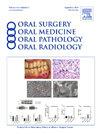Automatic detection of radiographic alveolar bone levels in bitewing and periapical intraoral radiographs using deep-learning technology: a pilot study
IF 2
3区 医学
Q2 DENTISTRY, ORAL SURGERY & MEDICINE
Oral Surgery Oral Medicine Oral Pathology Oral Radiology
Pub Date : 2025-02-04
DOI:10.1016/j.oooo.2024.11.010
引用次数: 0
Abstract
Objective
This pilot study aims to evaluate the diagnostic performance of a deep-learning platform, employing convolutional neural networks (Denti.AI Technology), in detecting radiographic alveolar bone levels in bitewing and periapical digital intraoral radiographs.
Study Design
The pretrained deep-learning model was tested using 22 periapical radiographs and 17 bitewing radiographs. The reference standard for the study was a consensus of 3 board-certified dental specialists. The panel followed the American Academy of Periodontology guidelines to identify radiographic bone loss on the basis of specific criteria for bitewing and periapical radiographs. Performance metrics including sensitivity, specificity, predictive values, accuracy, and mean absolute error (MAE) of the deep learning detecting bone levels were calculated.
Results
Standalone performance analysis revealed a sensitivity of 76%, specificity of 86%, positive predictive value of 83%, negative predictive value of 80%, accuracy of 81%, and MAE of 0.046 for periapical radiographs. Bitewing radiographs exhibited a sensitivity of 65%, specificity of 90%, positive predictive value of 88%, negative predictive value of 70%, accuracy of 76%, and MAE of 0.499.
Conclusion
This pilot study highlights the potential of deep-learning technology, using convolutional neural networks, for automatic detection of radiographic alveolar bone levels in bitewing and periapical intraoral radiographs. The achieved diagnostic performance metrics indicate promising uses for this technology.
求助全文
约1分钟内获得全文
求助全文
来源期刊

Oral Surgery Oral Medicine Oral Pathology Oral Radiology
DENTISTRY, ORAL SURGERY & MEDICINE-
CiteScore
3.80
自引率
6.90%
发文量
1217
审稿时长
2-4 weeks
期刊介绍:
Oral Surgery, Oral Medicine, Oral Pathology and Oral Radiology is required reading for anyone in the fields of oral surgery, oral medicine, oral pathology, oral radiology or advanced general practice dentistry. It is the only major dental journal that provides a practical and complete overview of the medical and surgical techniques of dental practice in four areas. Topics covered include such current issues as dental implants, treatment of HIV-infected patients, and evaluation and treatment of TMJ disorders. The official publication for nine societies, the Journal is recommended for initial purchase in the Brandon Hill study, Selected List of Books and Journals for the Small Medical Library.
 求助内容:
求助内容: 应助结果提醒方式:
应助结果提醒方式:


